I am trying to create a plot with dates on the x-axis in R using ggplot2 and the scales library. The problem is, when I am using the command scale_x_datetime(breaks = date_breaks(width = "1 day"), labels=date_format("%e. %b")), the breaks seems to be OK, but the labels are one day behind. So, for the data point for 1st of May, the label is the 30th of April.
I guess it is because I use the scale for discrete value, and it is intended for continuous data. Anyway, how can I make sure that the label for the 1st of May says 1st of May?
library(ggplot2)
library(scales)
start <- "2015-05-01 00:00:00"
end <- "2015-05-10 00:00:00"
df <- data.frame(
x = seq(as.POSIXct(start), as.POSIXct(end), by = "1 day"),
y = runif(10, 0, 20)
)
ggplot(df, aes(x, y)) +
geom_point() +
scale_x_datetime(breaks = date_breaks(width = "1 day"), labels=date_format("%e. %b"))
Solution with help from @Deena
breaks.index <- match(unique(format(df$x, "%d. %b")), format(df$x, "%d. %b"))
ggplot(df, aes(x, y)) + geom_point() +
scale_x_datetime(breaks = df$x[breaks.index],
labels = format(df$x[breaks.index], "%e. %b"))
